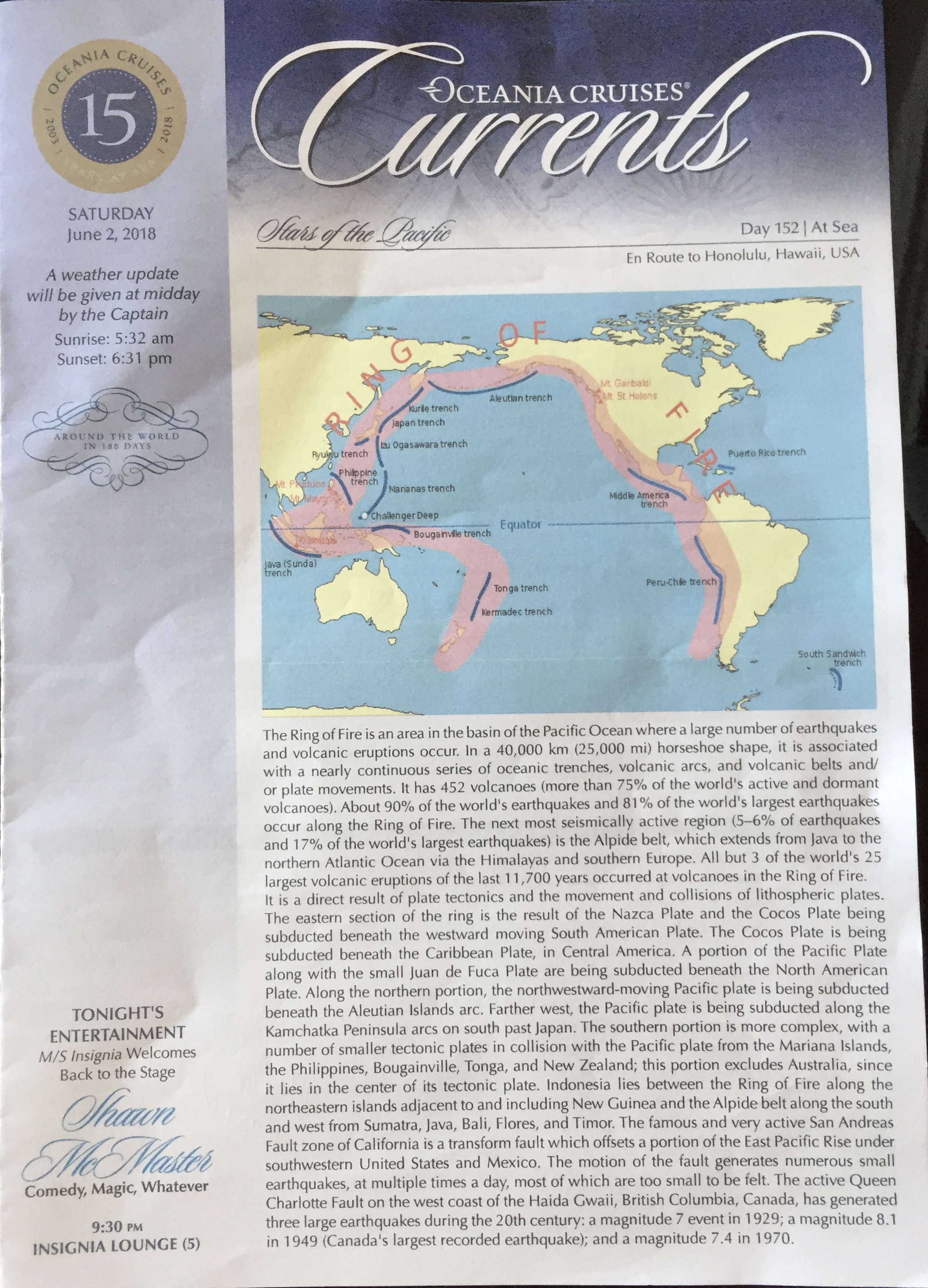We begin our 2,324-nautical mile journey yesterday at 4:00pm. The next morning we are greeted with moderate seas with enough wave motion to be very noticeable. Not enough to make us ill, mind you, because we sort of have our sea legs by now, but Cathy especially is feeling a bit dizzy all the time. Given the great weather we have had for most of the 160 days we have been aboard, we can’t really complain … but we do anyway. It’s with us 24 hours a day, and, like the weather, is a topic of conversation for everyone on Insignia.
Today will be a quiet day. We start with breakfast in the Grand Dining Room. It is very peaceful there in the morning. On most days, we opt for a quicker breakfast at Waves Grill, but on Sea Days we often take the extra time to eat in the Grand (as we have come to call it).
We attend Peter Croyle’s lecture on the Pacific Ocean, a very appropriate topic in that it is constantly reminding us of its sometimes unruly nature. Peter starts by telling us that the Pacific is: 1) 46% of the world’s ocean area; 2) one third of the entire area of the planet; 3) larger than all the land masses of the Earth put together; 4) by far the deepest ocean; and 5) the last area of the world to see human settlement.
The geology of the Pacific Ocean region is fascinating. He tells us about the formation of the Hawaiian archipelago, which includes not just the seven islands in the State of Hawaii, but extends west/northwest all the way to Midway Island, which is 1,191 miles from Kauai. The entire archipelago was formed by a hot spot in the Earth’s crust that moves two to four inches a year. Midway was the first to form, approximately 30 million years ago. Kauai is the oldest Hawaiian island at 5 million years, the “Big Island” Hawaii is the youngest at 400,000 years, and hence the activity taking place now on Kilauea volcano. The next island is forming under the sea right now, but it will be many thousands of years before it breaks through the surface of the Pacific.
He discusses once again the incredible migration that we in the United States never, ever learn about: the Austronesian Expansion. It began 5,000years ago in Taiwan, and spread south and east and even west over water. These incredible sailors developed twin-hull sailboats and out-rigged canoes to travel thousands of miles., learning to navigate by analyzing ocean currents, stars, wind patterns and even bird flight patterns. With no written language. The boats were so large that they brought pigs, dogs, chickens and plants such as breadfruit and coconut with them. Their skill was such that they were able to reach Samoa around 800 BCE. Incredible. Just incredible.
The rest of the day was spent writing, reading, and, of course, napping. Dinner was in the Grand Dining Room because Cathy saw that Sole Meuniere and Foie Gras were both available this evening! Here are pictures of these delicious dishes.


So that is our first of five straight Sea Days. Sure hope the Pacific tries to live up its name – or misnomer – given it by Magellan.





